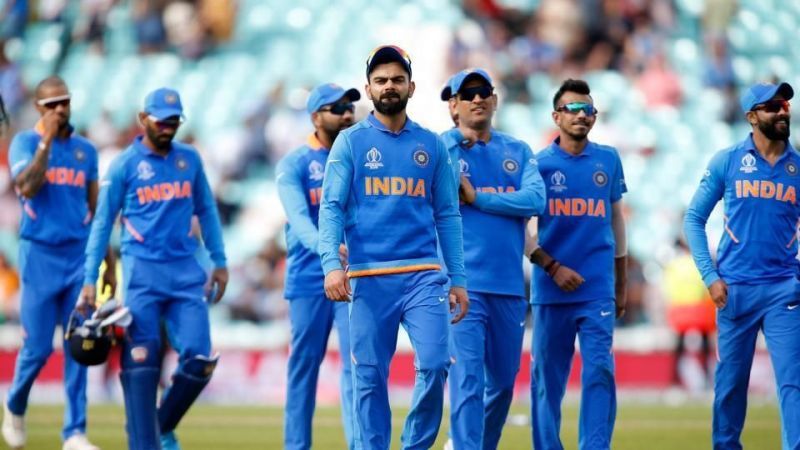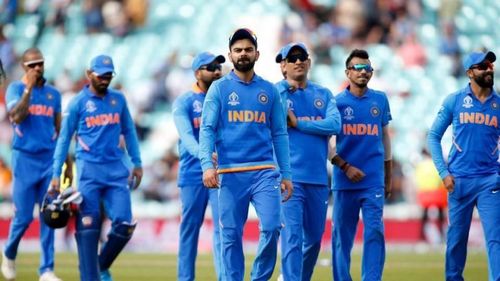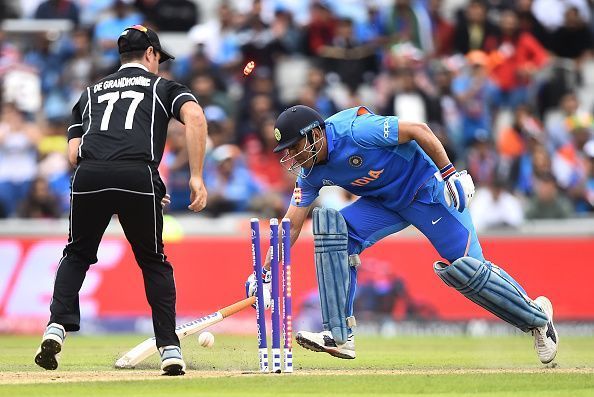
World Cup 2019: Not '45 minutes of bad cricket' but two years of poor management cost India

The Indian cricket team achieved tremendous success over the past couple of years and have consistently maintained a position in the top 2 of the ICC ODI rankings. India started this World Cup as one of the favorites and rightly so.
Cometh the World Cup, India cruised past heavyweights like South Africa, Australia, and Pakistan, which was followed by victories over Afghanistan and West Indies. The only loss in the league stage came against the hosts, which was a must-win game for England, before India hammered Bangladesh and Sri Lanka to reach the top the table.
A semifinal date was set with the Kiwis, who had lost three consecutive games and qualified on the virtue of net run rate. A win, if not an easy one, looked almost inevitable. But the one big question still making rounds in the minds of all Indian fans was, what if the law of averages catches up with Rohit Sharma and Virat Kohli in the all-important knockouts, just like the final of the Champions Trophy 2017?
New Zealand batted first and set India a target of 240, something which skipper Kane Williamson told they believed to be a good score on that pitch. In came Rohit and KL Rahul, with a target to negate the initial spell of the threatening new ball bowlers. But what unfurled then was something which has been the worst fear of Indian fans.
Matt Henry got Rohit caught behind in the second over of the chase. India's top-scorer of the tournament was back in the pavilion for just 1 run. But the master of chases, Kohli was still there and a signature hundred while chasing was long due. But Trent Boult trapped him in front of the stumps and sent him back for 1. The scorecard read 5/2.
In walked Rishabh Pant, playing his ninth ODI to counter the menacing spells from Boult and Henry. The next over saw Rahul edge to the keeper and India were 5/3. And more than half of the game was lost by then, with the in-form top three back in the hut and an under-performing middle order to follow. Every team knew the formula, but it was the Kiwis who executed it to perfection and that too in the knockouts. India's worst nightmare finally came true.
Now the question is, was India ready for this? The answer is surely in negative. The last time both Rohit and Kohli got out for single digits was in the final of the Champions Trophy, where India lost miserably. The top three have played incredibly well since then, but the middle order was clearly overlooked.
Yuvraj Singh got dropped due to fitness issues, despite having more than decent numbers. KL Rahul was then tried at 4, only to be dropped after three poor outings in Sri Lanka. The next series saw Manish Pandey at 4, but out of the five matches, he batted at 4 only twice and did not have a clear role in the other three.
The series against New Zealand saw Dinesh Karthik being given an opportunity, which he grabbed with both hands. Shreyas Iyer performed exceedingly well in the following series at number three and four. But the ODI series in South Africa which followed, it was Ajinkya Rahane who batted at 4. Despite a few decent outings, he was nowhere in the picture when India toured England next.
Ambati Rayudu and Karthik were tried in the middle order in the Asia Cup and both performed well. Rayudu was given a longer rope and during the West Indies series, the skipper claimed to have finally found a perfect number four batsman in Rayudu. After not so impressive outings in Australia and New Zealand, barring a match-winning 90 at Auckland, and a string of failures against Australia at home, Rayudu was overlooked for the World Cup.
Vijay Shankar, who had played two brilliant knocks under pressure till then was picked as the number four for the World Cup. And finally, after Shikhar Dhawan got injured, Rishabh Pant was called in, with an experience of just five games.
Now that was only about the number four slot. The remaining slots in the middle order were not in safe hands either. MS Dhoni had a mediocre 2018 and Hardik Pandya and Kedar Jadhav did not have much match-practice due to injuries. With the top three getting 63% of the runs in the last four years, the middle order was overlooked.
The beginning of 2019 saw contributions coming from middle order as well, with MS Dhoni winning the Man of the Series award in Australia. The series in New Zealand also saw valuable contributions and so did the home series against Australia. But never did the Indian middle-order rescued the team from a 10/3 or a 20/4 on their own, barring the one game in New Zealand. Every time there was someone from the top order to guide the middle order.
Even in this World Cup, every time India had none of the top three in the final 10 overs, the finish was well below par. The more important aspect to take note of is the change in the role of Dhoni. He is clearly not the same finisher and his strike rate has decreased immensely. He is now more of an anchor, someone who is expected to hold one end up.
Dhoni's approach of targeting certain bowlers was made more difficult by Williamson. The favorite prey of Dhoni, medium pacers, were not going to be made available to him till the very end. Williamson made sure he had to go through Henry, Boult, and Lockie Ferguson before he could hunt James Neesham.

Why only Dhoni? This has to be the biggest question of the hour. The other middle-order batsmen - Pant, Pandya, Shankar, Ravindra Jadeja, Jadhav, and Karthik have batted only 114 times in the last four years, compared to 190 innings by the English trio of Ben Stokes, Jos Buttler, and Moeen Ali. With so much of inexperience and uncertainties around him, it was clearly unfair to expect Dhoni to pull off the miracles every time.
India should definitely have prepared better and have a plan B, as mentioned by Harsha Bhogle, rather than hoping the top three to get them over the line every single time. The moment of truth finally arrived and it is clearly too late. Undoubtedly, this has to be the area of focus in the build-up to the next World Cup at home.
Nevertheless, it was a terrific campaign for India with more positives than negatives.